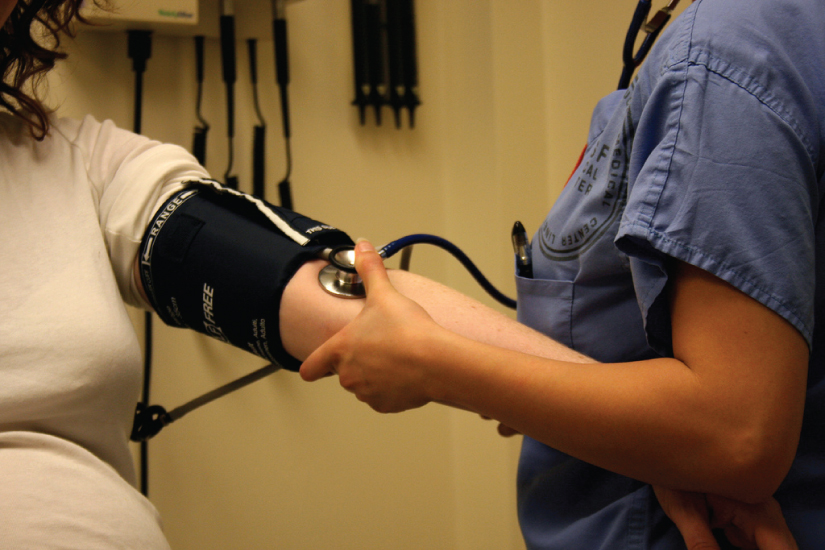
|

1.1 An introduction to the human body Read Online
1.2 The chemical level of organization Read Online

After studying this chapter, you will be able to:
Though you may approach a course in anatomy and physiology strictly as a requirement for your field of study, the knowledge you gain in this course will serve you well in many aspects of your life. An understanding of anatomy and physiology is not only fundamental to any career in the health professions, but it can also benefit your own health. Familiarity with the human body can help you make healthful choices and prompt you to take appropriate action when signs of illness arise. Your knowledge in this field will help you understand news about nutrition, medications, medical devices, and procedures and help you understand genetic or infectious diseases. At some point, everyone will have a problem with some aspect of his or her body and your knowledge can help you to be a better parent, spouse, partner, friend, colleague, or caregiver.
This chapter begins with an overview of anatomy and physiology and a preview of the body regions and functions. It then covers the characteristics of life and how the body works to maintain stable conditions. It introduces a set of standard terms for body structures and for planes and positions in the body that will serve as a foundation for more comprehensive information covered later in the text. It ends with examples of medical imaging used to see inside the living body.
Question: Pemphigus vulgaris is a rare autoimmune disease of small animals that causes ulcers in the mucosa. True/False
Choices:
True
False
Question: What is the most likely oral lesion that would cause an old ewe to become very thin?
Choices:
Dental attrition due to a coarse diet and inadequate wear of teeth and difficult grinding of food.
Periodontal disease that has become systemic.
A cavity that is painful.
Ulcer on tongue from a virus
Question: Full loss of epidermis is defined as ______________
Choices:
Erosion
Ulcer
Vesicle
a Bobo
Question: Accumulation of fluid in an elevated area of epidermis is called.......
Choices:
Erosion
Vesicle
Ulcer
Question: What components of the intestine are affected in a case of enteritis caused by Clostridium perfringens type C in a neonatal herbivore?
Choices:
Exotoxins of bacteria creates gas bubbles that destroy epithelium of abomasum.
Ulcers are formed that perforate lamina propria of the the intestinal wall
Toxins produced by the bacteria destroy epithelium and lamina propria of the small intestine
Question: Which of the following is false regarding chemical rumenitis "grain overload" ?
Choices:
The diet of fermentable carbohydrates forms lactic acid that lowers pH and kills normal flora of rumen.
damaged mucosa can be invaded by Fusobacterium or fungi that live in blood vessels.
Systemic effects include dehydration due to osmotic movement of water into rumen and acidosis due to lactic acid circulation.
Alkaline pH causes direct damage to mucosa forming a "chemical burn " of rumen wall
All of the above are true
Question: Partial loss of the epidermis is defined as........
Choices:
Ulcer
Erosion
Vesicle
Zit
Question: In there there was an equine esophagus with a bolus of feed lodged in the lumen. If this had been dislodged and the horse had been able to go home instead of being euthanized, what might have been the long term consequence of this episode of choke?
Choices:
after the food bolus was removed, the damaged mucosa might heal with very thickened squamous epithelium arranged in papillary forms that would mechanically block food from moving past this new obstructive lesion
a stricture might develop as granulation tissue matures and contracts at the site where the food bolus had been lodged
the wound becomes fibrotic and the horse is now more likely to experience necrotic esophageal disease
the horse will develop gastric reflux disease
Question: ______________ is defined as soft tissue inflammation associated with accumulation of bacteria and neutrophils in the gingival fold next to teeth.
Choices:
Dental Caries (cavities)
Palatoschisis
Dental attrition
Periodontal disease
Question: The cause of death in a GDV patient is from compressive atelectasis of lungs. True False
Choices:
True
False
Question: Braxy is an acute abomasitis of lambs caused by which agent?
Choices:
Clostridium perfringens type A
Salmonella
Clostridium septicum
Haemonchus contortus
BVD